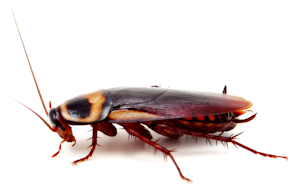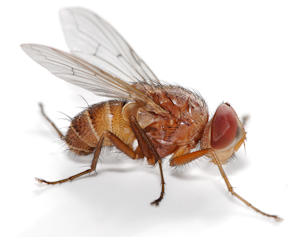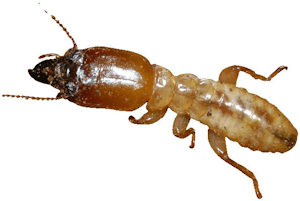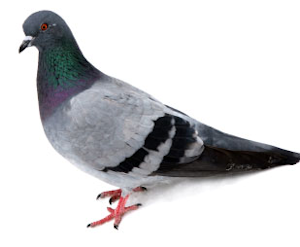Rodents:
 You might not see the mice, but you can probably hear them after dark, as mice are often more active at night. Don’t be surprised if your pets paw at walls and cabinets where mice are hiding. Watch for rodent droppings and nests in storage areas, such as garages and basements. Nests are usually made of materials like bits of cloth or shredded paper. Rodents breed constantly! One female rodent and its offspring can produce around 500 mice in a year!
You might not see the mice, but you can probably hear them after dark, as mice are often more active at night. Don’t be surprised if your pets paw at walls and cabinets where mice are hiding. Watch for rodent droppings and nests in storage areas, such as garages and basements. Nests are usually made of materials like bits of cloth or shredded paper. Rodents breed constantly! One female rodent and its offspring can produce around 500 mice in a year!
How do you control rodents?
To get rid of rodents in your property, follow the three basic steps below:
- Proper Sanitation – A clean uncluttered home/office will make it hard for mice to find hiding places and food. Actually, mice and rats can live on crumbs! Keep food and garbage in rodent-proof containers (metal or heavy-duty plastic with tight fitting lids), or in rodent-proof cabinets (including the refrigerator). Eliminate all sources of water such as condensation or leaks from faucets, pipes, radiators or any other sources.
- Rodent-Proofing – Don’t let mice get in! Seal all openings – like cracks and spaces around vents, wires and pipes – with sheet metal, concrete or a product like “Stuf-fit” which is a knitted copper wire mesh. Screen necessary openings, like fans and chimneys with 1/4″ wire mesh. Doors and windows should be screened with tight-fitting metal screens. Keep a tight–fitting door sweep on all exterior doors. Seal or cover all openings, since mice can jump 12″ high, run up the sides of buildings and cross cables and wires. Concourse can provide these services or make recommendations upon inspection.
- Removing Rodents – Get rid of the rodents you already have! Hire a licensed exterminator to trap/poison the existing population. Concourse Pest Control will use the utmost discretion and safest methods to rid your property of these unwanted vermin.
Cockroaches:
 To get rid of cockroaches, you must take away their:
To get rid of cockroaches, you must take away their:
Food
- Keep food in sealed containers or in the refrigerator.
- Paint cabinet shelves and drawers with enamel and keep them clean.
- Rinse all recyclables clean and take them out every few days.
- Put garbage in tightly covered containers and keep them outside.
- Wash dishes, tables, counters and stove tops every day.
- Store flour, sugar, cereal, pasta and crackers in tightly covered plastic or metal containers.
Hiding Places
- Clean out junk and clutter from storage shelves, drawers and closets.
- Don’t use shelf paper.
- Get rid of unused furniture, appliances, food and clothing.
- Do home repairs: fill in cracks, seal openings around pipes, and remove chipped paint using care not to make dust if paint contains lead.
- Remove or repair loose wallpaper and plaster.
- Water
- Fix all leaks.
- Clean drains.
- Keep all areas clean and dry.
- Pesticides should be used carefully, and as a last resort. Concourse Pest Control uses the least toxic product that works, follow label instructions and keep out of reach of children and pets. Vacuuming can easily remove many roaches, but it raises dust. A special filter (called HEPA) is available for use in many cases.
Bed Bugs
 What They Are and How to Control Them?
What They Are and How to Control Them?
Bed bugs have been around for thousands of years. They feed on blood, but are not known to spread any diseases to humans. Some people can be allergic to their bites. Getting rid of a bed bug infestation is not easy, but there are steps you can take to control the problem. There are also steps you can take to avoid bringing bed bugs home.
What are bed bugs?
- Bed bugs are small, flat wingless insects that are reddish-brown in color and approximately one-quarter inch long, before feeding (about the size and shape of a small apple seed).
- They hide during the day on beds (mattress seams, box springs, bed frames, headboards) and in cracks and crevices of walls, floors and furniture. They come out at night.
- They do not fly or jump, but they can crawl rapidly.
How can bed bugs get into my home?
- They can come from other infested areas or from used furniture. They can hitch a ride in luggage, purses, backpacks, or other items placed on soft or upholstered surfaces.
- They can travel between rooms in multi-unit buildings, such as apartment complexes and hotels.
How can I avoid bringing bed bugs into my home?
- When staying in a hotel, place your bag on a suitcase stand rather than on the bed or floor. Keep the rack away from walls or furniture. When returning home, wash the clothes from your trip and put them in a hot dryer.
- Inspect new and used furniture before bringing it inside. Look in seams, tufts and under cushions.
How do I know if I have a bed bug problem?
- You can see the bed bugs themselves, their shed skins, or their droppings in mattress seams and other items in the bedroom.
- There may also be blood stains on sheets.
How do I control a bed bug problem in my home?
It can be done, but it usually requires what is called an “integrated pest management” (IPM) approach. This combines techniques that pose the lowest risk to your health and the environment. Try these strategies:
- Clean and get rid of clutter, especially in your bedroom.
- Move your bed away from walls or furniture.
- Vacuum molding, windows and floors every day. Vacuum sides and seams of mattresses, box springs and furniture. Empty the vacuum or the bag immediately and dispose of outside in a sealed container or bag.
- Wash sheets, pillow cases, blankets and bed skirts and put them in a hot dryer for at least 30 minutes. Consider using mattress and box spring covers –the kind used for dust mite control–and put duct tape over the zippers.
- Seal cracks and crevices and any openings where pipes or wires come into the home.
Pesticides may not be effective and can be dangerous if used improperly. If you decide to use pesticides, follow these rules:
- Only use pesticides that are registered by the U.S. Environmental Protection Agency (look for the U.S. EPA Registration Number on the label) and make sure they are labeled to control bed bugs.
- Do not apply pesticides directly to your body (there are no repellents registered to control bed bugs that can be used on the human body).
- Do not use outdoor pesticides indoors.
- If you decide to hire a pest control company, make sure they have experience with bed bugs. They should follow the steps of IPM, along with any pesticide application. Use a company that is registered and employs licensed applicators.
Flies:
 There are more than 120,000 species of flies worldwide. Most flies live an average of 21 days and take on various shapes throughout their short lives. Baby flies are called larvae but they are also known as maggots. Fruit flies live for 8-10 days. In that time, females lay around 500 eggs, using rotting fruit or vegetables as their nest. Flies are known to carry many diseases and fecal matter from one place to the next. If a fly lands on your food, it is distributing fecal matter and decaying matter. All fly species are treated by the exterminator depending on the type of species it is.
There are more than 120,000 species of flies worldwide. Most flies live an average of 21 days and take on various shapes throughout their short lives. Baby flies are called larvae but they are also known as maggots. Fruit flies live for 8-10 days. In that time, females lay around 500 eggs, using rotting fruit or vegetables as their nest. Flies are known to carry many diseases and fecal matter from one place to the next. If a fly lands on your food, it is distributing fecal matter and decaying matter. All fly species are treated by the exterminator depending on the type of species it is.
To learn what species is infesting your property and how to get rid of flies and prevent infestations, speak to a Concourse Pest Control Representative.
Termite Infestations
Termite treatments and good building methods can’t completely prevent a termite infestation. Homeowners in termite-prone areas have to keep an eye out for signs of the wood-eating insects. Often, the first sign of infestation is the emergence of a swarm. If you find alates inside your home, they probably came in through your walls. This is a sure sign that there are termites in your home. However, if you find a swarm outside, particularly if it’s coming from a stump or a tree, the infestation may not have reached the building. Alates can look a lot like ants — here’s how to tell the difference:
 •Ants have a narrow waist. Termites do not.
•Ants have a narrow waist. Termites do not.
•Ants’ front wings are significantly longer than their back wings. Termites’ wings are the same length, and they can fold straight back down the length of the termite’s body.
•Ants’ antennae are bent. Termites’ antennae do not bend, and they look like a very fine string of pearls.
Here are some other common signs of home termite infestation:
•Wings: Alates (termites) shed their wings just after swarming. When the alates are inside your home, they typically shed their wings on windowsills or near lights.
•Decayed wood: Termite damage generally follows the grain of the wood. Termites also line the damaged wood with soil. Damage from other sources, like water or fungus, doesn’t follow this pattern.
•Shelter tubes: Termites will dig tubes up cinderblocks, concrete, brick and other surfaces in order to get to wood. Sometimes, if you break the tubes open, you will see live termite workers inside.
Termite damage happens from the inside out, so it can be hard to detect an infestation. If the wood in your house sounds dull when hit with a hammer, there may be termite activity inside. You can also use a screwdriver or ice pick to carefully probe anywhere you believe termites might be hiding. This can reveal damaged wood and the termites themselves.
Treating a termite infestation requires a professional exterminator.
When Concourse Pest Control comes to your home, we will first verify that termites are the culprit. Other insects, including carpenter bees and some species of ants, can also damage wood homes. Some people may also mistake water damage for termite damage. The exterminator will use tools like long probes, heat sensors, sound sensors, infrared cameras, hammers and drills to look for termite damage.
If the exterminator finds conclusive signs of termites, he may use one of three treatment methods:
•Baits are wood, cardboard or other cellulose-containing products soaked in a pesticide. Termites eat the baits and carry particles back to their nests, poisoning the rest of the colony.
•Repellents discourage termites from entering a particular area. These can help keep termites from colonizing a new site in your home.
•Termaticides kill the termites. Sometimes, exterminators have to pump hundreds of gallons of termaticide into termite nests in an attempt to treat the infestation. Another tactic involves applying an insecticide around the entire perimeter of the home and at every possible termite entry point. This keeps termites from getting inside, and any that are already inside usually die of dehydration.
Pigeons:
 Feral pigeons (Columba livia), also called city doves, city pigeons,street pigeons or “Rats with wings”, are derived from domestic pigeons that have returned to the wild. The domestic pigeon was originally bred from the wild Rock Dove, which naturally inhabits sea-cliffs and mountains. Rock (i.e. ‘wild’), domestic and feral pigeons are all the same species and will readily interbreed. Feral pigeons find the ledges of buildings to be a substitute for sea cliffs, have become adapted to urban life, and are abundant in towns and cities throughout much of the world. Bird and Pigeon control programs are available.
Feral pigeons (Columba livia), also called city doves, city pigeons,street pigeons or “Rats with wings”, are derived from domestic pigeons that have returned to the wild. The domestic pigeon was originally bred from the wild Rock Dove, which naturally inhabits sea-cliffs and mountains. Rock (i.e. ‘wild’), domestic and feral pigeons are all the same species and will readily interbreed. Feral pigeons find the ledges of buildings to be a substitute for sea cliffs, have become adapted to urban life, and are abundant in towns and cities throughout much of the world. Bird and Pigeon control programs are available.
Raccoons:
Raccoons are among the most widespread mammals in New York State. The adaptable raccoon can be found everywhere, from the most remote forest to the crowded inner city. Raccoon populations often are more dense in large cities than in the wild, but abundance varies widely in different types of habitat and different parts of the State. Raccoons feed mainly at night. They eat fruit, nuts, berries, small animals and insects, and also will feed on pet food, garbage, and garden crops.
 Female raccoons look for den sites in late winter. Litters of one to seven young are born in April and May. Mortality and Disease Factors most common in the Raccoon are Canine Distemper, Raccoon Rabies and Roundworm
Female raccoons look for den sites in late winter. Litters of one to seven young are born in April and May. Mortality and Disease Factors most common in the Raccoon are Canine Distemper, Raccoon Rabies and Roundworm
Raccoons are protected by law. No one may possess a raccoon without a license, and licenses are not issued for pet wildlife. Hunting or trapping raccoons requires a license. The law allows unlicensed homeowners and farmers to destroy raccoons that damage property. However, property owners should try eliminating food and shelter before killing the animal.
Except where temporarily reduced by rabies or distemper, raccoon numbers may be very high. While densities in rural areas may be 20 – 40 raccoons per square mile, raccoon densities in some developed parts of the State (e.g. Long Island) may exceed 100 per square mile.
Here are some ways to prevent raccoons from becoming a nuisance:
•Do not leave pet food outside. Feed pets only as much as they will eat at once, and remove all leftovers. If necessary, place pet feeders in an enclosed area such as a porch, garage, or barn.
•Keep garbage bags in an entry-way or garage, and in a metal can. Run a rubber strap, rope or soft wire through the lid and attach to the can handles. To make it hard for raccoons to remove lids, hang the can one foot above the ground, or use a rack and secure the cans upright.
•Surround gardens with an electric fence made up of two wires attached to an insulated post, one wire four inches and the other eight inches above the ground. Install the fence before vegetables ripen.
•Block the openings raccoons are using to get into your attic, porch or other location. Place a temporary cover when the raccoons leave on their nightly search for food, and make a permanent seal later. To check if the raccoons have really left, sprinkle twigs, grass or flour in the opening and watch for tracks. Caution: do not permanently seal entrances without first verifying that all animals are out of the den. Especially in the spring, look and listen for animal noises.
•Nuisance wildlife control persons licensed by New York State can be hired to deal with problem raccoons. Injured and “orphaned” raccoons should be left alone. Animals actually in need of assistance may be cared for by licensed wildlife rehabilitators.
Feral Cats:
We are working with the Mayor and New York City to help our feral cats. Please check out this website for details on this program at the New York City Feral Cat Initiative (NYCFCI) site.
If you have any questions, please give us a call or send us an email. Concourse Pest Control will help you with all of your pest control needs.


